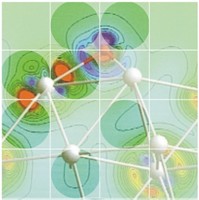More about the Institute |
|
Evolvement of research areas Today chemistry based research in the Institute follows four main directions. In the field of synthetic chemistry of inorganic fluorine compounds, synthesis of the then unknown xenon hexafluoride and photosynthesis of krypton difluoride in liquefied fluorine are important landmarks. The latter is still valid today as the most successful method for the synthesis of krypton difluoride. One hundred fold greater quantities can be prepared than with other methods, resulting in extensive investigations of high energy oxidizers. This has led, in collaboration with the University of California at Berkeley, to the synthesis and characterization of a series of higher binary fluorides of silver, copper and nickel - a highly significant achievement. Fluorination reactions of organic molecules are also studied, including an important long-term collaboration with BASF investigating the fluorination of polymeric materials. |
J. Stefan Institute, Jamova 39, 1000 Ljubljana, Slovenia, Telephone: +386 1 477 39 00 |

